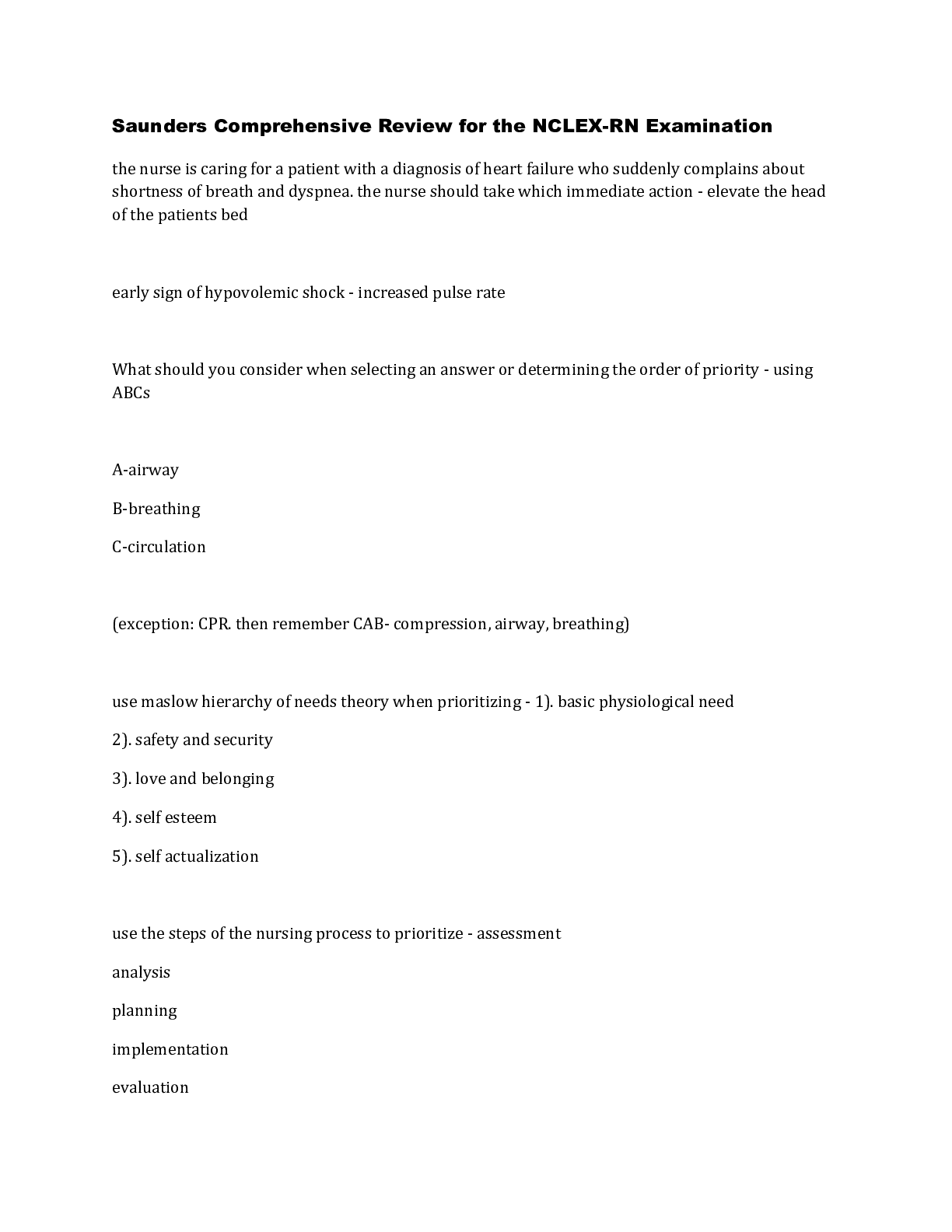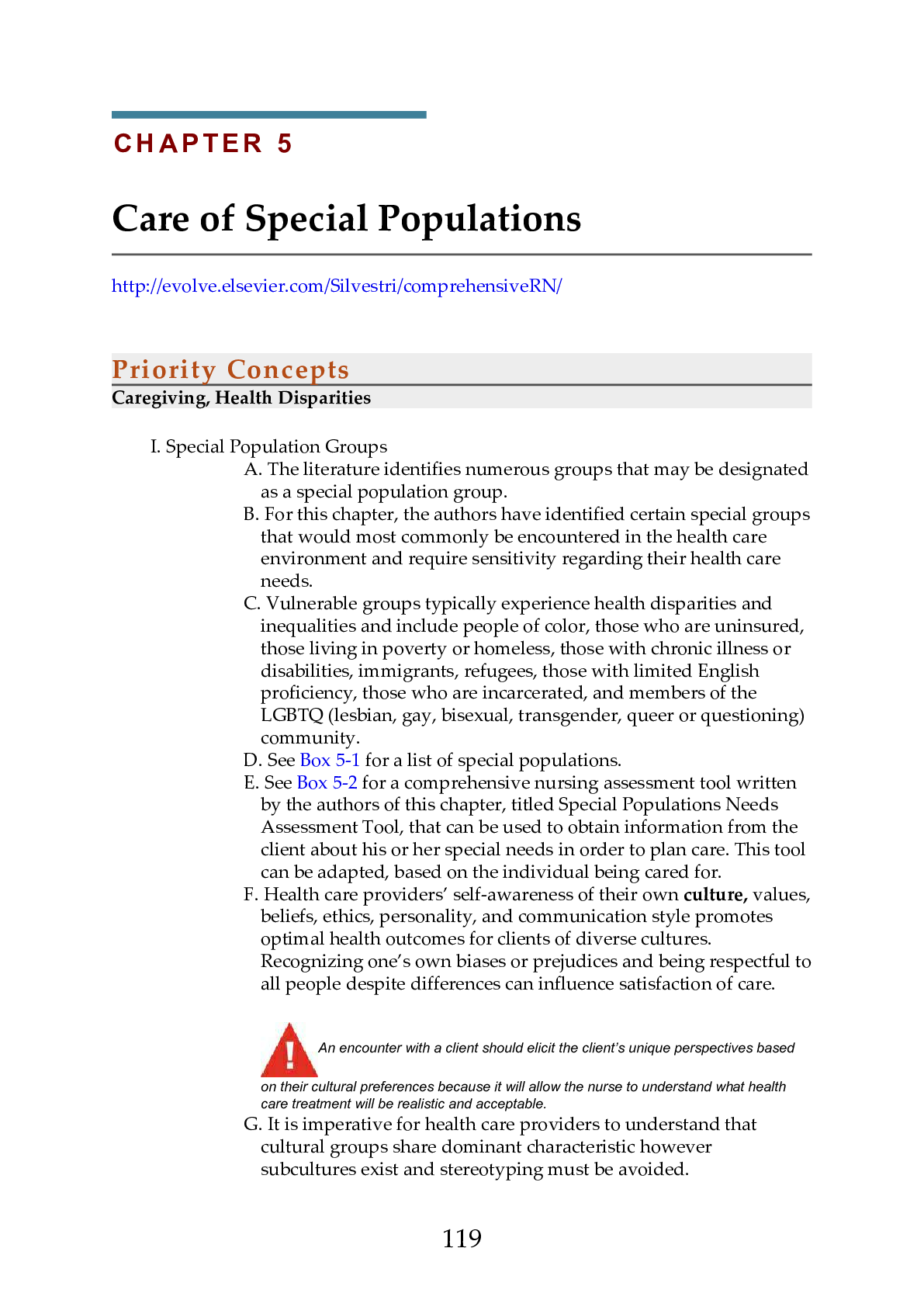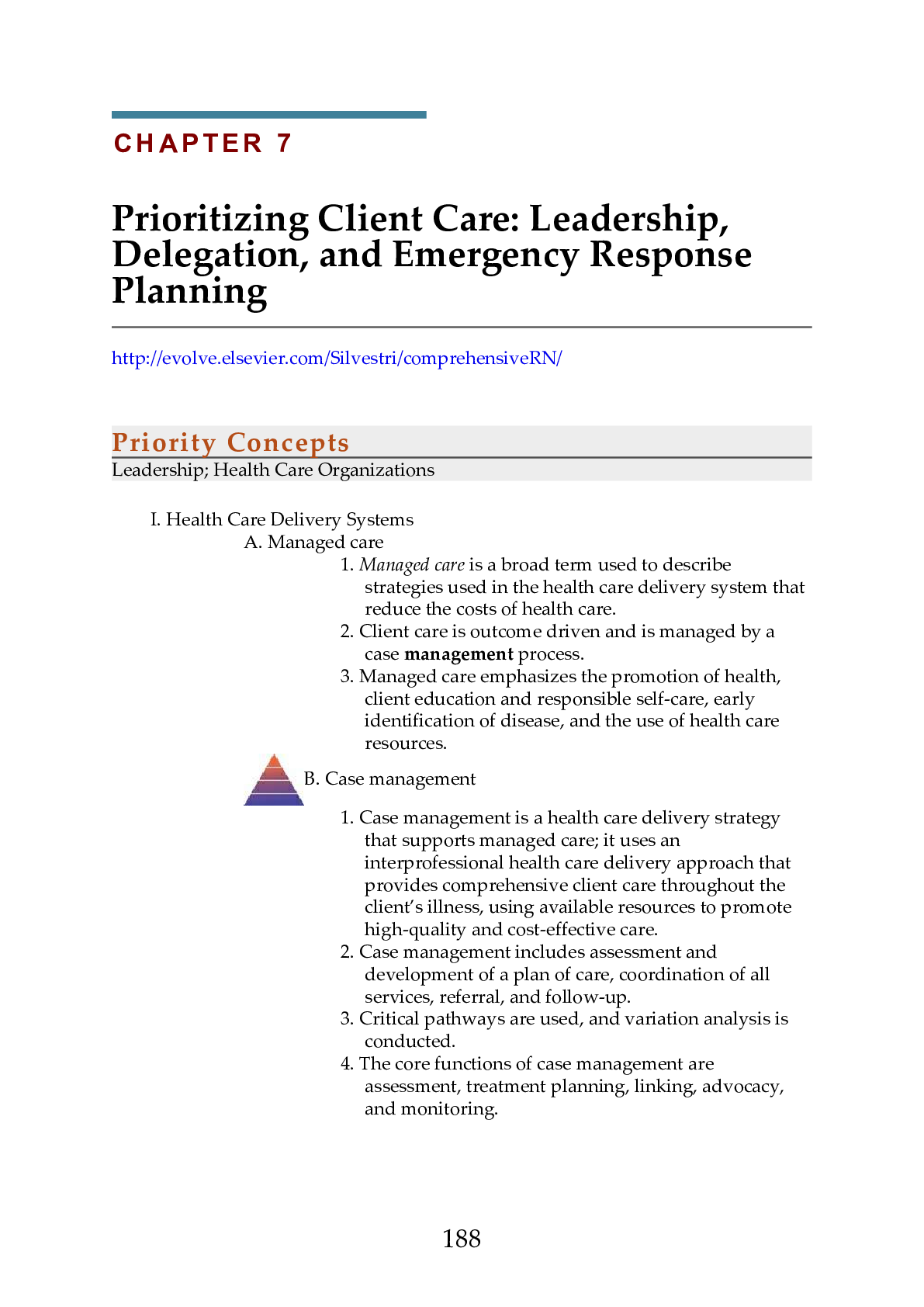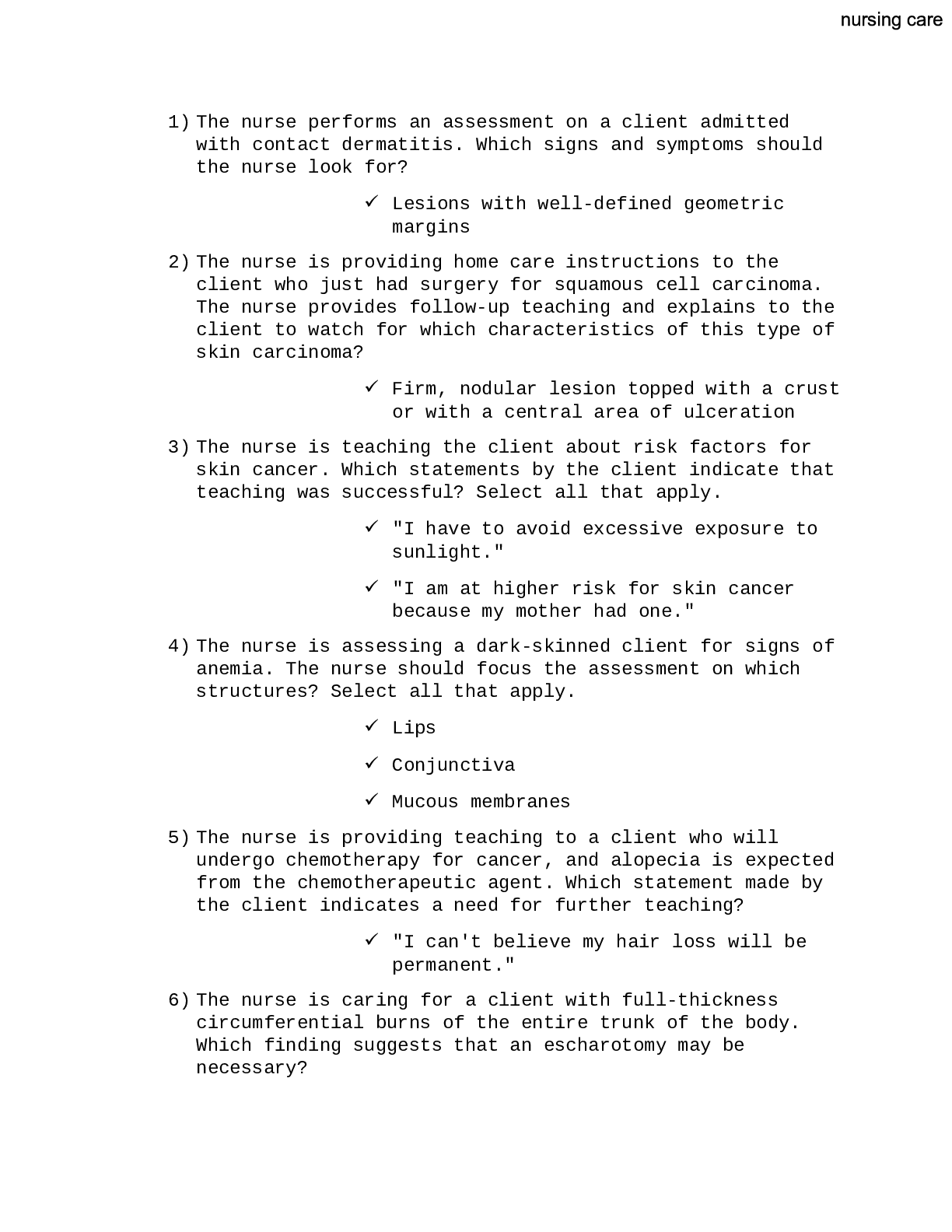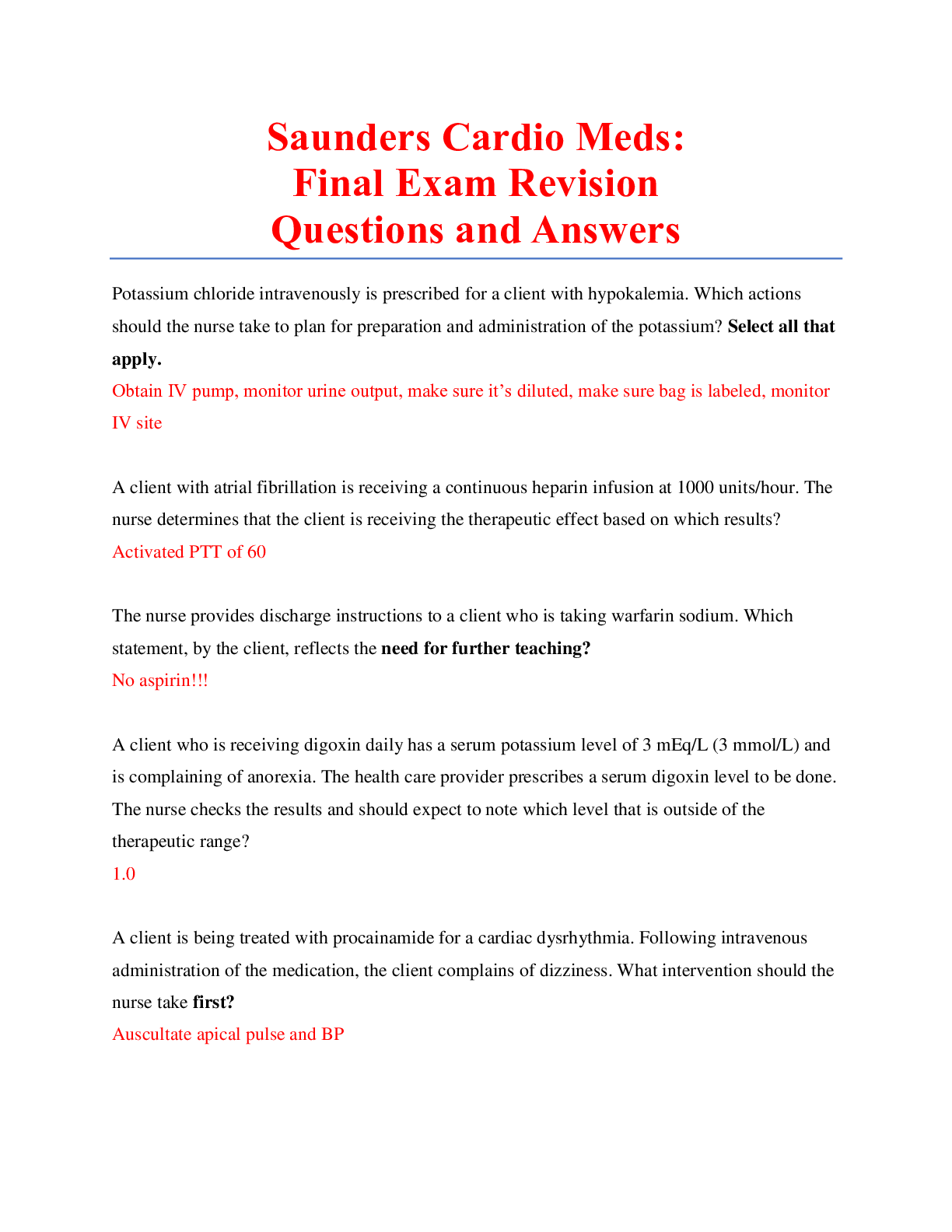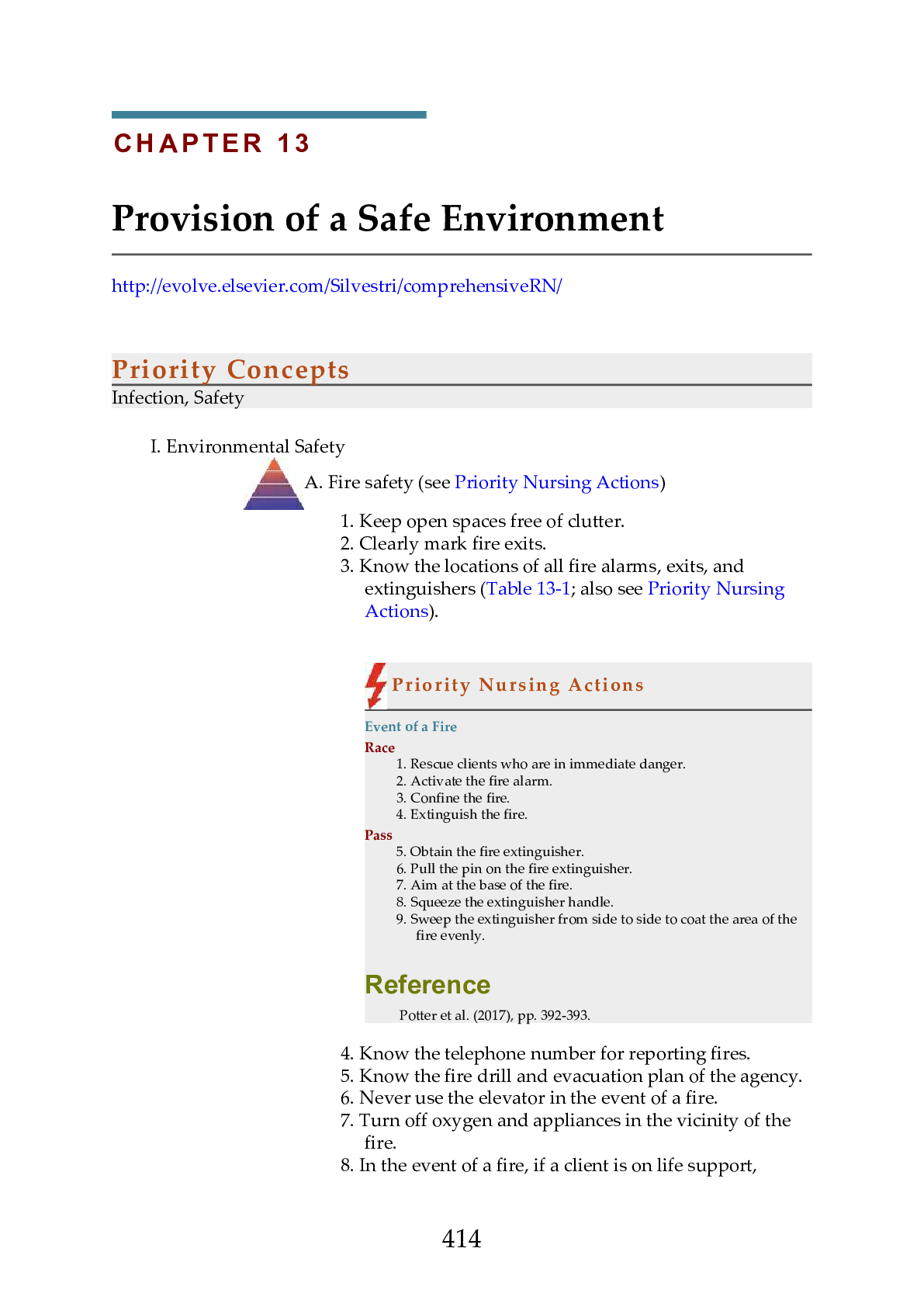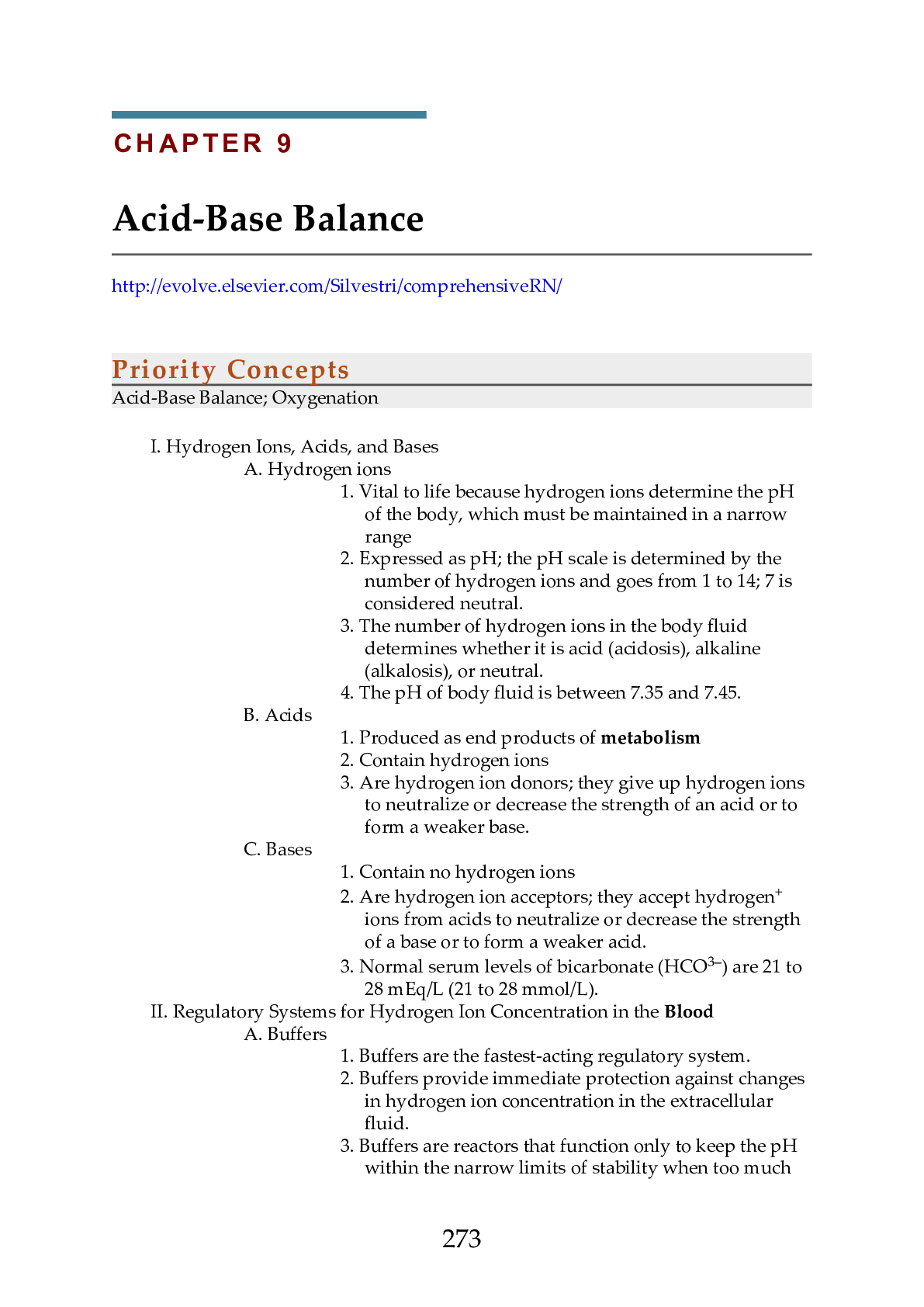*NURSING > NCLEX-RN > Silvestri: Saunders Comprehensive Review for the NCLEX-RN Examination, 5th Edition TESTBANK (All)
Silvestri: Saunders Comprehensive Review for the NCLEX-RN Examination, 5th Edition TESTBANK
Document Content and Description Below
. The nurse is caring for a client in labor. The nurse reviews the physician’s prescriptions and notes that the client has a prescription for butorphanol tartrate (Stadol). The nurse understands th... at this medication is prescribed for: 1. Pain relief 2. Increasing uterine contractions 3. Decreasing uterine contractions 4. Promoting fetal lung maturity ANS: 1 Rationale: The client in labor may be given parenteral analgesia during the first stage of labor, up to 2 to 3 hours before the anticipated delivery. Butorphanol tartrate is a medication that may be prescribed for pain relief. “Increasing uterine contractions,” “decreasing uterine contractions,” and “promoting fetal lung maturity” are not actions of this medication. Test-Taking Strategy: Knowledge of the action of butorphanol tartrate is required to answer this question. Remember that this medication is used for pain relief. Review the action of this medication if you had difficulty with this question and are unfamiliar with this medication. PTS: 1 DIF: Level of Cognitive Ability: Understanding REF: Lehne, R. (2010). Pharmacology for nursing care (7th ed.). St. Louis: Saunders. OBJ: Client Needs: Physiological Integrity TOP: Content Area: Pharmacology MSC: Integrated Process: Nursing Process—Planning 2. The postpartum nurse is caring for a client with an epidural catheter in place for opioid analgesic administration following cesarean birth. If the client develops respiratory depression and requires naloxone (Narcan) as an antidote, the client may complain of which of the following? 1. Increase in her pain level 2. Decrease in her pain level 3. Increase in the amount of itching from the opioid used in the epidural 4. Decrease in the amount of itching from the opioid used in the epidural ANS: 1 Rationale: Remember that opioids are used for epidural analgesia. Naloxone is an opioid antagonist, which reverses the effects of opioids. If it is given, the client may complain of an increase in her pain level. Therefore “decrease in her pain level,” “increase in the amount of itching from the opioid used in the epidural,” and “decrease in the amount of itching from the opioid used in the epidural” are incorrect. Test-Taking Strategy: To answer this question accurately, you must know that opioid analgesics are the medications used with epidural analgesia to relieve pain. Therefore if naloxone is administered as an antidote for an opioid analgesic, the client’s pain will increase. Review the effects of naloxone if this question was difficult. PTS: 1 DIF: Level of Cognitive Ability: Understanding REF: Lehne, R. (2010). Pharmacology for nursing care (7th ed.). St. Louis: Saunders. OBJ: Client Needs: Physiological Integrity TOP: Content Area: Pharmacology MSC: Integrated Process: Nursing Process—Assessment 3. A client experiencing preterm labor at the twenty-ninth week of gestation has been admitted to the hospital. The client has a prescription to receive betamethasone (Celestone). The nurse understands that the medication will do which of the following? 1. Prevent spontaneous delivery. 2. Stop the uterine contractions. 3. Promote maturation of the fetal lungs. 4. Accelerate the growth rate of the fetus. ANS: 3 Rationale: Betamethasone (Celestone) is classified as an anti-inflammatory and corticosteroid. It increases the surfactant level and lung maturity in the fetus, which reduces the incidence of respiratory distress syndrome. Delivery must be delayed for at least 48 hours after administration of betamethasone to allow time for the lungs of the fetus to mature. Test-Taking Strategy: Options that are comparable or alike are not likely to be correct. With this in mind, eliminate “prevent spontaneous delivery” and “stop the uterine contractions.” Note the strategic words “twenty-ninth week of gestation.” Specific knowledge about the medication and knowledge of the problems encountered by premature infants will assist in answering this question. Review the action of this medication if this question was difficult. PTS: 1 DIF: Level of Cognitive Ability: Understanding REF: McKinney, E., James, S., Murray, S., & Ashwill, J. (2009). Maternal-child nursing (3rd ed.). St. Louis: Saunders. OBJ: Client Needs: Physiological Integrity TOP: Content Area: Pharmacology MSC: Integrated Process: Nursing Process—Planning 4. A client with preeclampsia is receiving magnesium sulfate. The nurse assesses the client closely for which sign of magnesium toxicity? 1. Proteinuria 2. Hyperactive deep tendon reflexes 3. Respiratory rate of 10 breaths/min 4. Serum magnesium level of 5 mEq/L ANS: 3 Rationale: Magnesium toxicity is a risk associated with magnesium sulfate therapy. Signs of magnesium toxicity relate to central nervous system (CNS) depression and include respiratory depression, loss of deep tendon reflexes, and sudden drop in fetal heart rate and/or maternal heart rate and blood pressure. Magnesium is excreted through the kidneys. If renal impairment is present, magnesium toxicity can develop very quickly. Therapeutic serum levels of magnesium are 4 to 7 mEq/L. Test-Taking Strategy: To answer this question accurately, you must recall that magnesium sulfate is a CNS depressant. Begin to answer this question by eliminating “proteinuria” and “hyperactive deep tendon reflexes,” which are signs of preeclampsia. Select between the last two options using medication knowledge and recalling that the therapeutic serum levels of magnesium are 4 to 7 mEq/L. Review this medication and the normal magnesium level if this question was difficult. PTS: 1 DIF: Level of Cognitive Ability: Analyzing REF: Lowdermilk, D., Perry, S., & Cashion, K. (2010). Maternity nursing (8th ed.). St. Louis: Mosby. OBJ: Client Needs: Physiological Integrity TOP: Content Area: Pharmacology MSC: Integrated Process: Nursing Process—Assessment 5. A pregnant client who has human immunodeficiency virus (HIV) infection is being seen in the antenatal clinic. The nurse recalls that zidovudine (AZT) therapy will be initiated when the fetus has reached how many weeks of gestation? 1. 4 2. 14 3. 24 4. 34 ANS: 2 Rationale: The pregnant women with HIV infection will be prescribed oral AZT in the fourteenth week of gestation. Before this time, the fetus is at risk because of the teratogenic effects of the medication. In addition, a bolus of AZT is given intravenously during labor, and the neonate is treated for six weeks after birth. Test-Taking Strategy: To answer this question accurately, you must be familiar with pharmacological therapy for clients who are HIV-positive. Knowing that the fetus is most vulnerable to the effects of medications and chemicals during the period of organogenesis will assist you in selecting the correct answer. Review treatment measures for the pregnant client with HIV infection if you had difficulty with this question. PTS: 1 DIF: Level of Cognitive Ability: Understanding REF: Lehne, R. (2010). Pharmacology for nursing care (7th ed.). St. Louis: Saunders. OBJ: Client Needs: Physiological Integrity TOP: Content Area: Pharmacology MSC: Integrated Process: Nursing Process—Planning 6. The nurse has a routine prescription to instill erythromycin ointment (Ilotycin) into the eyes of a newborn. The nurse plans to explain to the parents that the purpose of the medication is to: 1. Help the newborn to see more clearly. 2. Guard against infection acquired during intrauterine life. 3. Ensure the sterility of the conjunctiva in the newborn. 4. Protect the newborn from contracting an eye infection during birth. ANS: 4 Rationale: The use of eye prophylaxis with an agent such as erythromycin protects the newborn from contracting a conjunctival infection during birth. This infection, called ophthalmia neonatorum, results from maternal vaginal infection with chlamydia or gonorrhea. This prophylaxis is mandatory in the United States. “Help the newborn to see more clearly,” “guard against infection acquired during intrauterine life,” and “ensure the sterility of the conjunctiva in the newborn” do not describe the purposes of this medication. Test-Taking Strategy: Familiarity with the purpose of this medication is needed to answer this question. Remember erythromycin protects the newborn from contracting a conjunctival infection during birth. Review the purpose of this medication if you had difficulty with this question. PTS: 1 DIF: Level of Cognitive Ability: Applying REF: Lehne, R. (2010). Pharmacology for nursing care (7th ed.). St. Louis: Saunders. OBJ: Client Needs: Health Promotion and Maintenance TOP: Content Area: Pharmacology MSC: Integrated Process: Teaching and Learning 7. The nurse has a routine prescription to administer an injection of phytonadione (vitamin K) to the newborn. Before giving the medication, the nurse explains to the client that this medication will: [Show More]
Last updated: 1 year ago
Preview 1 out of 277 pages
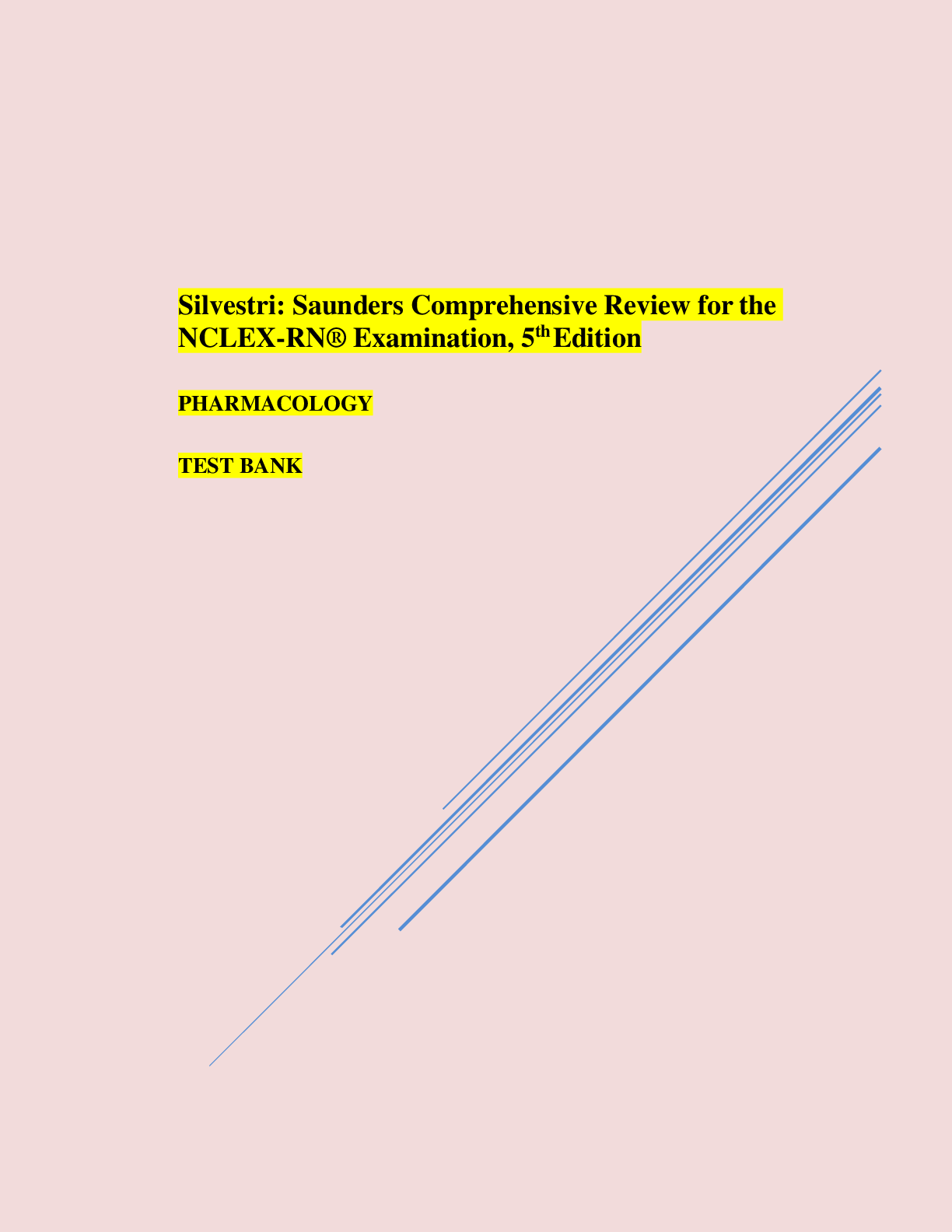
Reviews( 1 )

by Pierre Percy · 2 years ago
Document information
Connected school, study & course
About the document
Uploaded On
Jun 07, 2021
Number of pages
277
Written in
Additional information
This document has been written for:
Uploaded
Jun 07, 2021
Downloads
1
Views
101



